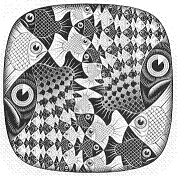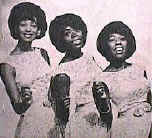Particularity
Upon learning of the recent death of Walter J. Ong, S. J., philosopher of language, I ordered a copy of his book
Hopkins, the Self, and God
University of Toronto Press, 1986.
As the reader of my previous entry will discover, I have a very low opinion of the literary skills of the first Christians. This sect’s writing has, however, improved in the past two millennia.
Despite my low opinion of the early Christians, I am still not convinced their religion is totally unfounded. Hence my ordering of the Ong book. Since then, I have also ordered two other books, reflecting my interests in philosophical fiction (see previous entry) and in philosophy itself:
Philosophical fiction —
The Hex Witch of Seldom,
by Nancy Springer,
Penguin Putnam Inc., 2002
(See 1 Corinthians 1:26-29)
Philosophy —
Definition,
by Richard Robinson,
Fellow of Oriel College, Oxford,
Oxford U. Press, 1954, reprinted 1962.
Following the scientific advice of Niels Bohr and Freeman Dyson, I articulated on April 25, 2003, a mad theory of the mystical significance of the number 162.
Here is that theory applied to the three works named above, all three of which I received, synchronistically, today.
Page 162 of Hopkins, the Self, and God is part of the long list of references at the back of the book. Undiscouraged by the seeming insignificance (vide my note Dogma) of this page, I looked more closely. Behold, there was Christ… Carol T. Christ, that is, author of The Finer Optic: The Aesthetic of Particularity in Victorian Poetry, Yale University Press, 1975. “Particularity” seemed an apt description of my “162” approach to literature, so I consulted Christ’s remarks as described in the main body of Ong’s book.
Particularity according to Christ —
“Victorian particularist aesthetics has prospered to the present time, and not only in novels. The isolated, particularized, unique ‘good moment’ [Christ, 105], the flash of awareness at one particular instant in just the right setting, which Hopkins celebrates….”
— Ong, Hopkins, the Self, and God, p. 14
I highly recommend the rest of Ong’s remarks on particularity.
Turning to the other two of the literary trinity of books I received today….
Page 162 of The Hex Witch of Seldom has the following:
“There was a loaf of Stroehmann’s Sunbeam Bread in the grocery sack also; she and Witchie each had several slices. Bobbi folded and compressed hers into little squares and popped each slice into her mouth all at once.”
The religious significance of this passage seems, in Ong’s Jesuit context, quite clear.
Page 162 of Definition has the following:
“Real Definition as the Search for a Key. Mr. Santayana, in his book on The Sense of Beauty, made the following extremely large demands on real definition:
‘A definition <of beauty> that should really define must be nothing less than the exposition of the origin, place, and elements of beauty as an object of human experience. We must learn from it, as far as possible, why, when, and how beauty appears, what conditions an object must fulfil to be beautiful, what elements of our nature make us sensible of beauty, and what the relation is between the constitution of the object and the excitement of our sensibility. Nothing less will really define beauty or make us understand what aesthetic appreciation is. The definition of beauty in this sense will be the task of this whole book, a task that can be only very imperfectly accomplished within its limits.’ ”
Here is a rhetorical exercise for Jesuits that James Joyce might appreciate:
Discuss Bobbi’s “little squares” of bread as the Body of Christ. Formulate, using Santayana’s criteria, a definition of beauty that includes this sacrament.
Refer, if necessary, to
the log24.net entries
Mr. Holland’s Week and Elegance.
Refrain from using the phrase
“scandal of particularity”
unless you can use it as well as
Annie Dillard.







































